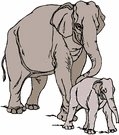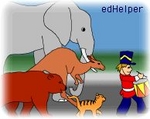
Worksheets and No Prep Teaching Resources
Reading Comprehension Worksheets
Animal Themes
Mammals

Animal Themes
 Worksheets and No Prep Teaching Resources Reading Comprehension Worksheets Animal Themes Mammals |
 Animal Themes |
| edHelper's suggested reading level: | grades 6 to 8 | |
| Flesch-Kincaid grade level: | 7.54 |
| Snow Monkeys |

|
 1 Monkeys are smart. There is no disputing that. Yet, among nearly 200 different kinds of monkeys, there is just one who knows the secret of living comfortably in a cold climate! That unique species is the snow monkey.
1 Monkeys are smart. There is no disputing that. Yet, among nearly 200 different kinds of monkeys, there is just one who knows the secret of living comfortably in a cold climate! That unique species is the snow monkey. |
Create Weekly Reading Books
Prepare for an entire week at once! |
| Leave your feedback on Snow Monkeys (use this link if you found an error in the story) |
 |
Animal Themes
|
 |
Mammals
|
|
|